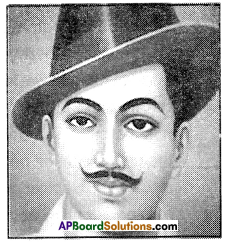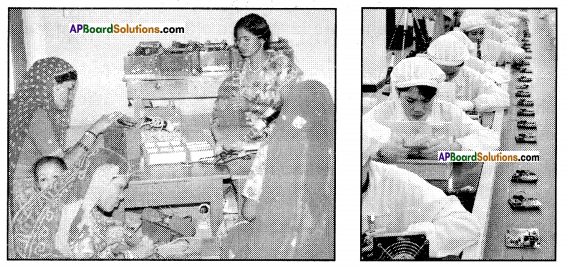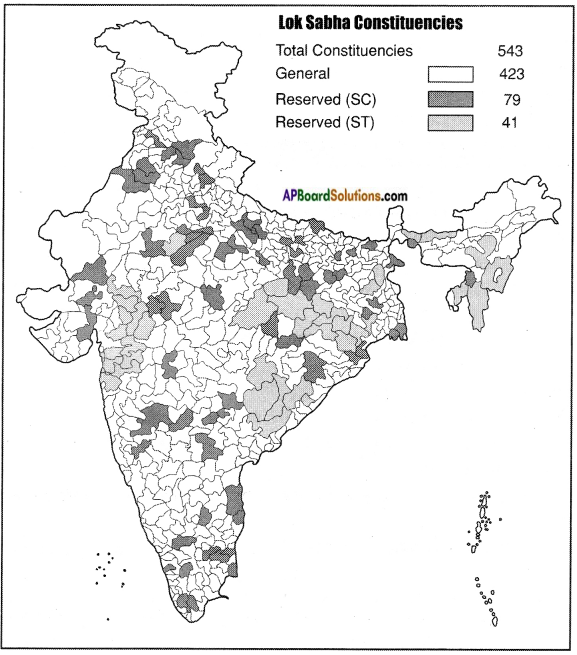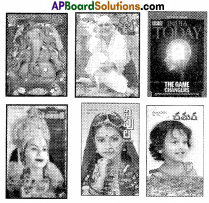SCERT AP Board 8th Class Social Solutions 17th Lesson Understanding Poverty Textbook Questions and Answers.
AP State Syllabus 8th Class Social Studies Solutions 17th Lesson Understanding Poverty
8th Class Social Studies 17th Lesson Understanding Poverty Textbook Questions and Answers
Question 1.
Which of the following statement/statements in the context of poverty as chronic hunger is true?
a. Having food only once a day
b. Having food below the required calorie
c. The person driving the harvester and person ploughing the field requires the same calorie of food
d. Person ploughing the field requires more calories than shop owner
e. Hunger also affects the person’s immune system
Answer:
a) True
b) True
c) False
d) True
e) True

Question 2.
Identify the major reasons for poverty described in the chapter.
Answer:
Big families, lack of chances according to capacity or eligibility, less wages/salaries, change in agricultural operations, crop failure and usage of machines etc., are the major reasons for poverty described in the chapter. The most important contributor to poverty is the lack of regular employment.
Question 3.
A) What have been the major features in programmes like MNREGA and PDS?
B) Which aspects of poverty do they try to address?
C) Why are ration shops necessary?
Answer:
A) Major features:
(i) MNREGA
MNREGA lays down that any adult member willing to do unskilled manual work and who is looking for work must be given work by the government. A rural household can demand at least one hundred days of employment in a year for which they would be paid not below the minimum wages. The following are some sample activities taken up under MNREGA.
- water conservation and water harvesting
- drought-proofing (including afforestation and tree plantation)
- provisions of irrigation facility to land owned by households belonging to the SCs and STs
- renovation of traditional water bodies including desilting of tanks.
(ii) The system of ration shops distributing foodgrains and other essential items is known as the Public Distribution System (or PDS in short). PDS has existed in India right from the time of independence and has played a crucial role in reaching food to everyone both in the rural and urban areas. There were of course problems of functioning. At places, the ration shops would not open regularly or on time. The foodgrain stocks would be adulterated with the intention that no one buys. Ration shop owners would be found selling foodgrains to other shops rather than to the public. Many people including the poor would not receive ration. Performance of ration shops was not so good as expected in the poorest states and the poorest regions of India.
B) Alongside employment, the government ensured that everyone has access to affordable food. They tried to address these aspects of poverty.
C) Employment and income cannot do much, if the prices of essential items are very high. So the government supplies the basic needs at fair price. So the ration shops are needed.

Question 4.
Why are people without employment also often without assets, such as land, cattle, shops, etc.?
Answer:
The people those who have no employment cannot save their earnings. Without savings they cannot purchase assets. So they do not have assets.
Question 5.
Read the first two paragraphs under the title “The Struggle towards ‘the Right to Life” on page 201 and 202 and comment on them.
The Struggle towards “The Right to Life”: The new policy on PDS has been in the center of much debate. We know that about 4 out of 5 people in the rural areas consume less than the minimum required calories. And yet, not even 3 out of 10 families in the rural areas in India possessed BPL and Antyodaya cards, as per the National Sample Survey of 2004. Thus, a large number of people who earlier benefited from the PDS were no longer convered by it. Many families of landless labourers did not have BPL cards. Whereas, there were some reports of well-off families with BPL cards.
There are other contradictions too in the new PDS (Public Distribution System) Policy. The government of India often has huge piles of food stocks (i.e. foodgrains that it bought from farmers). There have been times when foodgrains rot in godowns and are eaten by rats. Since the ration shops sell foodgrains at a fair price only to BPL, Antyodaya and Annapurna card holders, there are unsold stocks at the ration shop too. And yet, there is a feeling that we are not able to provide food to all.
Answer:
- Today in India 4 out of 5 people in the rural areas consume less than the minimum required calories.
- But our government especially for rural areas they introduced Antyodaya cards for BPL people.
- According to national sample survey many families of landless labourers did not have BPL cards. Whereas there were some reports of well of families with BPL cards.
- There are so many problems with new PDS systems.
- Even though the government has more food grains stock, but ration shops provide food grains to only card holders and not for other people.
- That’s why in our country majority of landless poor people did not get even one meal for a day. Still so many families fight for “Right to life”.

Question 6.
Write a letter to your District Collector on the functioning of P.D.S programme in your village.
Answer:
To
The District Collector,
Machilipatnam,
Krishna District.
From
A. Suneeta, Class : VIII,
M.P. Ele. School, Nunna.
Sir,
We are residing in Nunna in Vijayawada Rural. We have white card for our family. We are receiving 20kgs of rice from the ration shop. From the last two months we are receiving spoiled rice from the dealer. I came to know that all the villagers are receiving rice in less quantity also. So I request you to look into the matter and to enquire the issue. This is for kind information and necessary favourable action.
Thanking you sir,
Yours faithfully
xx xxx
Address:
A. Suneeta
D/o. A. Narasayya
Nunna; Vijayawada Rural,
Krishna District.

Question 7.
Visit the ration shop in your neighborhood and look for the following:
1. When does the ration shop open?
Answer:
The ration shop is open from 8 am to 12 am and from 4 pm to 8 pm.
2. What are the items sold at the ration shop?
Answer:
Rice, wheat, sugar, tamarind, red gram and palmolive oil are sold in ration shops.
3. Do you find the system of different card-holders?
Answer:
Yes, I find white and pink cards.
4. Can you compare the prices of rice and sugar from the ration shop (for families below poverty line) with the prices at any other grocery store? [Important: Ask for the ordinary variety rates at the grocery shop.]
Answer:
| Prices in Ration Shops |
Prices in Kirana Shops |
| 1) Rice |
1 kg Re. 1/- |
1) Same quality |
Rs. 25/- |
| 2) Red gram |
1 kg Rs. 130/- |
2) Same quality |
Rs. 160/- |
| 3) Sugar |
1 kg Rs. 14/- |
3) Same quality |
Rs. 40/- |
| 4) Tamarind |
1 kg Rs. 65/- |
4) Same quality |
Rs. 90/- |
| 5) Palmolive oil |
1 Itr Rs. 55/- |
5) Same quality |
Rs. 68/- |
8th Class Social Studies 17th Lesson Understanding Poverty InText Questions and Answers

Question 1.
Discuss what is common about Chandraiah’s and Ramachari’s lives. (Textbook Page No. 193)
Answer:
- Both are economically poor.
- Both are the sufferers of hunger.
- Both persons’ wives are staying in other places due to their works.
- Both have illhealth.
- Both look like elders.
Question 2.
What is the average calorie intake of persons in the top quarter in the country? (Textbook Page No. 194)
Answer:
The average calorie intake of persons in the top quarter in the country is 2521.
Question 3.
By what percentage does the calorie intake of persons in the bottom quarter fall short of the daily calorie standard? (Textbook Page No. 194)
Answer:
23% of the calorie intake of persons in the bottom quarter fall short of the daily calorie standard.
Question 4.
Do you find any relationship between the economic background of person and his/her nutritional status? (Textbook Page No. 196)
Answer:
Yes, I find the relationship between economic background of person and his/her nutritional status. If the economic standard is less, the nutritional status is also low and vice versa.

Question 5.
Do you think that cash transfer scheme is an alternative to the PDS? (Textbook Page No. 201)
Answer:
I do not think so.
Reason:
e.g.: Through PDS the government is supplying 1 kg of rice for Re. 1/-. For this the government is bearing the subsidy of Rs, 19/-.
In the cash transfer scheme the government transfers these Rs. 20/- directly to the beneficiary’s account. If the price of rice in the market is high, this would not be successful.
Question 6.
In what way, was Ramachari’s livelihood related to agriculture in the village? (Textbook Page No. 293)
Answer:
Till a few years back, Ramachari would get around 40 clients, most of them farmers. They paid for his services with paddy. Each gave him 70 kilograms a year. Of the 2800 kg he got this way, he kept what his family needed and sold the rest in the market. He could get around Rs.375 for 70 kg of paddy. This was some years ago. After retaining what his family required, he could make Rs. 8000 in a year this way. With that, he looked for the family. Thus the livelihood of Ramachari was related to agriculture.
Then the poor may lose their food security. So I think this is not the right scheme.
Question 7.
Do you think the hardships that the family faces were because of:
(a) Ramachari’s lack of awareness and effort (OR)
(b) the livelihood situation in the village. (Textbook Page No. 193)
Answer:
(b) the livelihood situation in the village.
Question 8.
What do you think can be done so that Ramachari and his family get two square meals a day? (Textbook Page No. 193)
Answer:
Ramachari should also go to the nearest town with his wife for daily works. Then only he and his family can get two square meals a day.

Question 9.
How would you describe the exchange between Ramachari and the farmers in the village? (Textbook Page No. 193)
Answer:
I describe the exchange between Ramachari and the farmers in the village as follows:
“One for all and all for one”.
Question 10.
How many kilograms of paddy would Ramachari retain for the family in normal years? (Textbook Page No. 193)
Answer:
1300 kgs of rice approximately.
Question 11.
Can we consider Rs. 8000 a year sufficient to cover the family’s expenses (other than foodgrains)? (Textbook Page No. 193)
Answer:
Rs. 8000 per year means Rs. 667 per month. We cannot consider it sufficient to cover the family’s expenses.
Question 12.
Discuss the different living standards in the following urban picture. (Textbook Page No. 193)

Answer:
| People in building |
People in tents |
| 1) They spend luxurious life. |
1) They spend miserable life. |
| 2) They are rich. |
2) They are poor. |
| 3) They have better facilities. |
3) They have no common facilities. |

Question 13.
Here are a few steps that the government must undertake to support agricultural growth and those dependent on agriculture. Can you write a few lines on each? Why is it important? You could give examples from your own context.
i) Timely provision of seed, fertilizer, pesticides by the government such that the farmer does not have to depend on middlemen/ traders. The government must ensure that these products are of standard quality and reasonably priced.
ii) Small irrigation projects
iii) Timely availability of bank loans at reasonable interest rate
iv) Outlets or marketing the crops at a fair price for producers
v) Development of roads, transport systems in the countryside
vi) Assistance to farmers in case of crop failure . (Textbook Page No. 197)
Answer:
i) The farmers earn least income on agriculture. They cannot purchase seeds etc., from dealers for more rates.
e.g.: In recent period, the low quality cotton seeds were supplied to the farmers in some districts. They met heavy losses due to this.
ii) In India agriculture depends on monsoons which are indefinite. So the small irrigation projects should be encouraged.
e.g.: Ten years back there were no rains. So the farmers did not sow the seeds. But suddenly there were heavy rains in the months of July and August. They bought the sprouts for heavy rates and sowed them. The crops grew well. At the end of November there was a heavy cyclone. All the fields were drowned. So there should be small irrigation projects.
iii) If the loans are not available in time, the farmers would approach the money lenders or other landlords. They collect heavy interests on the loans. The farmers will become .permanent debtors.
(v) e.g.: In recent past the lorry owners announced and conducted a strike for many days. At that time some farmers failed to carry the sugarcane to the factory. They incurred heavy losses as it got dried.
vi) In case of crop failure, the banks should lend additional loans and should write off the interests. Otherwise the farmers cannot cultivate in the next crop season. They cannot repay the loan. Today many farmers are committing suicides due to these reasons.

Question 14.
Read the following and answer the following questions.
MNREGA lays down that any adult member willing to do unskilled manual work and who is looking for work must be given work by the government. A rural household can demand at least one hundred days of employment in a year for which they would be paid not below the minimum wages. The following are some sample activities taken up under MNREGA.
- water conservation and water harvesting
- drought proofing (including afforestation and tree plantation)
- provisions of irrigation facility to land owned by households belonging to the SCs and STs
- renovation of traditional water bodies including desilting of tanks.
(i) With the help of your teacher, find out what the above works (given in Italics) mean.
Answer:
The above mentioned works fulfil the needs of agriculture. This enables the villages to arrange their resources. This indicates the development of villages.
(ii) Plan a visit to one of the sites in your village/ town where you can see public works in progress. Record your conversations.
In our village ‘Nunna’, the canal banks are repaired under this scheme. The roads are cleaned and the tanks are desilted.
Due to this scheme, the people are getting works in summer season also. This controls their migrations.
(iii) Why do you think the MNREGA places priority on provision of irrigation facility to land owned by households belonging to the SCs and STs?
Answer:
The government sanctioned some funds for the development of SCs and STs from many years. These funds were remained unused. So these are used for irrigation and drinking water facilities to them only. With this they feel self-reliance.

Question 15.
Why do you think is the calorie intakes of the people so low? (Textbook Page No. 194)
Answer:
As they have low earnings, they cannot purchase costly foods which have high calories. They cannot eat and cannot work. So they are habituated to eat stomachful of food, e.g.: Rice & chutney / rice & curry or rice & sambar.
So they are taking so low calories.
Question 14.
Do you think the poor will be served better now with new policy? Provide reasons in favour of your answer. (Textbook Page No. 201)
Answer:
I think that the poor will be served better now with new policy.
Reasons:
- The government takes back the white cards from ineligibles.
- So the provisions are supplied only to the poor and the poorest.
Question 15.
Ration shops are also called fair price shops. Can you guess why? (Textbook Page No. 202)
Answer:
The provisions in ration shops are available at low prices when compared to open market. So they are called fair price shops.
Question 16.
Could you suggest some more ways of improving the PDS? (Textbook Page No. 201)
Answer:
Some suggestions:
- The beneficiaries should be selected confidentially.
- Middle class also should be taken into consideration with BPL families.
- Standard weights should be measured in these ration shops.
- Dealers should be selected on a particular basis.

![]()
![]()
![]()
![]()

![]()
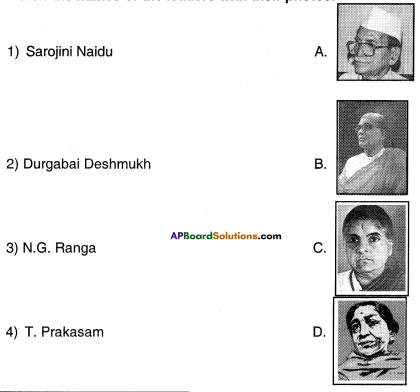
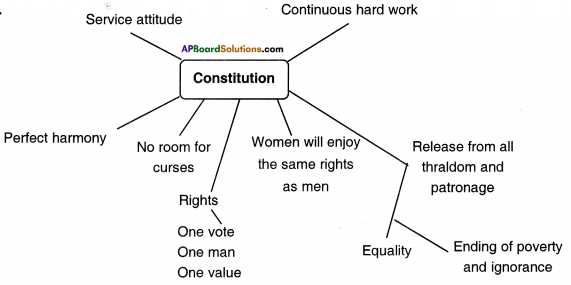
![]()
![]()
![]()

![]()

